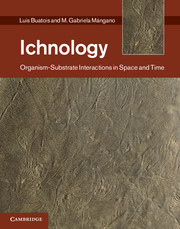4 - The ichnofacies model
from Part I - Conceptual tools and methods
Published online by Cambridge University Press: 25 October 2011
Summary
Anyone can make the simple complicated. Creativity is making the complicated simple.
Charles Mingus Unsourced quoteIchnofacies stand today as one of the most elegant but widely misunderstood concepts in ichnology.
Robert Frey, George Pemberton, and Thomas Saunders “Ichnofacies and bathymetry: a passive relationship” (1990)The ichnofacies model was introduced in a series of papers originally published in German by Seilacher (1954, 1955b, 1958, 1963b), and later expanded into English (Seilacher, 1964a, 1967b). In doing so, he created from a series of apparently disparate worldwide observations an elegant and coherent conceptual model. This body of work resulted in the first paradigm in ichnology, and transformed this field of research from a parochial discipline practiced by a few into a mainstream paleontological and geological science with a rich conceptual framework and multiple fruitful applications. Subsequently, the model was refined and expanded in a series of papers (e.g. Frey and Seilacher, 1980; Bromley et al., 1984; Frey and Pemberton, 1984, 1985, 1987; Bromley, 1990, 1996; Pemberton et al., 1992b; Bromley and Asgaard, 1993a; Lockley et al., 1994; Buatois and Mángano, 1995b, 2009; Gibert et al., 1998, 2007; Genise et al., 2000, 2010a; Ekdale et al., 2007; Hunt and Lucas, 2007; Minter and Braddy, 2009), remaining at the core of ichnology, both as a theoretical framework and as a tool. The aim of this chapter is to provide an updated review of the ichnofacies model, addressing not only marine softground and substrate-controlled ichnofacies, but also invertebrate and vertebrate continental ichnofacies. Vertebrate ichnofacies are still in flux and what is presented herein should be understood as a preliminary “state-of-the-art” rather than a consensus view on the matter.
- Type
- Chapter
- Information
- IchnologyOrganism-Substrate Interactions in Space and Time, pp. 58 - 82Publisher: Cambridge University PressPrint publication year: 2011
- 2
- Cited by

